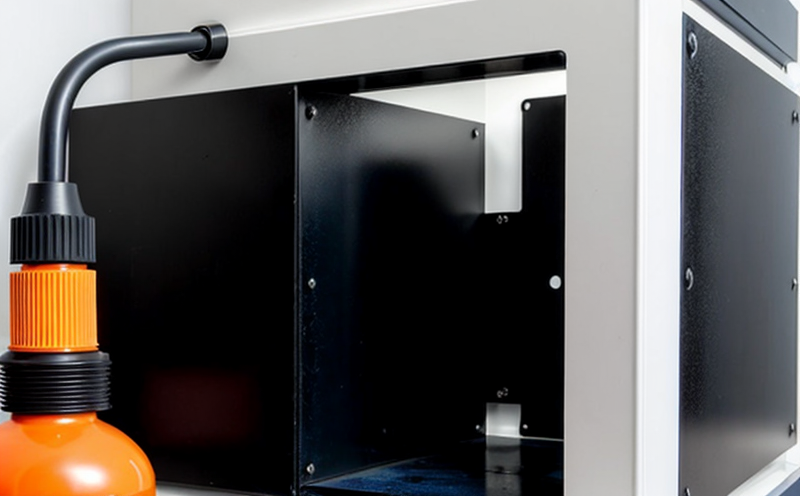ISO 15184 Pencil Hardness Evaluation of Coated Surfaces
The ISO 15184 pencil hardness test is a standardized method designed to evaluate the resistance of coated surfaces, particularly nanocoatings and surface treatments, against scratching. This test is crucial for quality managers, compliance officers, R&D engineers, and procurement teams who need to ensure that their products meet stringent durability standards.
This procedure involves drawing lines with pencils of varying hardness across a specified area on the sample surface. The degree of pencil hardness used can range from 2H (very hard) to 6B (very soft). By observing the extent and depth of the scratch marks, the test provides insights into the coating's ability to resist abrasion.
The ISO 15184 test is particularly useful in industries dealing with nanocoatings, where surface integrity can significantly impact product performance. For instance, coatings used in automotive finishes need to withstand environmental stresses and mechanical wear, while coatings in medical devices must ensure biocompatibility and resistance to abrasion.
The test protocol specifies the type of pencil to be used, the speed at which it should move across the surface, and the number of strokes required. This ensures consistency and comparability between different samples or batches. The procedure is designed to mimic real-world conditions that a coated surface might encounter in use.
Understanding the hardness of a nanocoating can help manufacturers optimize their formulations to achieve the desired balance between hardness and flexibility. Harder coatings provide greater scratch resistance but may lack flexibility, leading to potential cracking under thermal or mechanical stress. Conversely, softer coatings offer better flexibility but are less resistant to abrasion.
The ISO 15184 pencil hardness test is often used in conjunction with other tests such as the cross-cut adhesion test (ISO 2409) and the pot life measurement of the coating material. Together, these tests provide a comprehensive assessment of the physical properties of nanocoatings.
For R&D engineers, this test can serve as an early indicator of potential issues in their formulation development. By identifying coatings that fail to meet hardness requirements at an early stage, they can make necessary adjustments and avoid costly rework later in the product lifecycle.
The pencil hardness test is also important for compliance officers who need to ensure that their products comply with relevant international standards. The test results provide clear, quantitative data that can be referenced against specified hardness criteria set out by ISO 15184 or other applicable standards.
For quality managers and procurement teams, the results of this test are essential for making informed decisions about material selection and supplier performance. They can use these insights to specify coatings with appropriate hardness levels and to negotiate terms that ensure consistent quality across suppliers.
Benefits
The ISO 15184 pencil hardness evaluation offers several key benefits:
- Consistent Quality Assurance: The standardized procedure ensures that the test results are reliable and comparable, allowing for consistent quality control across different batches or suppliers.
- Compliance with Standards: By adhering to ISO 15184, manufacturers can ensure their products meet international standards, which is crucial for global market access.
- Enhanced Product Performance: Understanding the hardness of coatings helps in optimizing formulations to achieve desired properties such as durability and flexibility.
- Risk Mitigation: Early identification of coatings that fail to meet hardness requirements can prevent costly rework and recalls.
In summary, ISO 15184 pencil hardness evaluation is a vital tool for ensuring the durability and quality of nanocoatings in various industries. It supports compliance with international standards, enhances product performance, and mitigates risks associated with material failure.
Why Choose This Test
The ISO 15184 pencil hardness evaluation is a preferred choice for several reasons:
- Standardized Procedure: The test adheres to the stringent guidelines of ISO 15184, ensuring consistent and reliable results.
- Industry Recognition: This method is widely accepted in the industry, providing a robust basis for quality assurance.
- Comprehensive Insights: It offers valuable information on both the hardness and flexibility of coatings, which are critical factors in product performance.
- Expertise and Experience: Our laboratory has extensive experience in conducting this test and interpreting results accurately.
By choosing our services for ISO 15184 pencil hardness evaluation, you gain access to a team of experts who can provide detailed insights into the performance characteristics of your nanocoatings. This knowledge is invaluable for optimizing formulations and ensuring compliance with industry standards.





